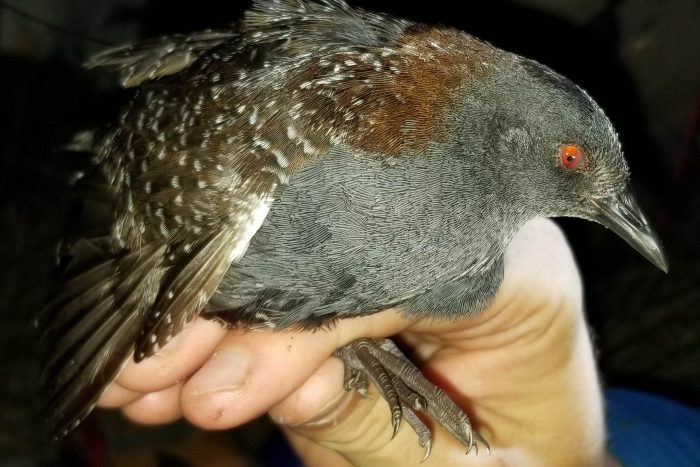Eastern Black Rail
Laterallus jamaicensis jamaicensis
Black rail is a small, secretive marsh bird. It is approximately the size of a sparrow with black, white-spotted feathers and red eyes.
This section shows one large critter image at a time. Use the thumbnails that follow to select a specific image to display here.

This gallery contains a grid of small thumbnails. Selecting a thumbnail will change the main image in the preceding section.
Appearance
The eastern black rail is four to six inches long with a wingspan of up to 11 inches. It weighs approximately 1.2 ounces. The black rail is mostly gray to black with a black bill and red eyes. They have some brown feathers on their backs and white spots on their dark wing feathers. There is no significant size difference between males and females.
Feeding
Black rails likely eat mostly small invertebrates and seeds, but because they are rarely seen, little is known about their feeding habits.
Predators
The black rail may be preyed on by raccoons, snakes and raptors. However, there are larger threats to the black rail from habitat loss and climate change.
Flight
The black rail often gets around the marsh by walking or running through the grasses rather than flying. It is rarely seen in flight.
Voice
The black rail makes a distinctive ki-ki-kerrrr call.
Reproduction and life cycle
Black rails build their nests on the ground, making a cup, canopy and entrance ramp out of woven marsh plants. They usually lay six to eight white, brown-spotted eggs in June or July and both the male and female take turns incubating them for the next 2.5 to three weeks. The chicks have dark brown eyes when they are first born that turn to olive at around four weeks, then amber at eight weeks, then finally to red at about three months.
Did you know?
- The black rail is the smallest of all North American rails.
- The eastern black rail is listed as threatened or endangered in Delaware, Maryland, New York and Virginia.
- Sea level rise, changes in precipitation and rising temperatures are causing the loss of marsh habitat black rails need to survive.
- Human impacts, like habitat fragmentation, and invasive species pose a conservation challenge for black rail populations.
